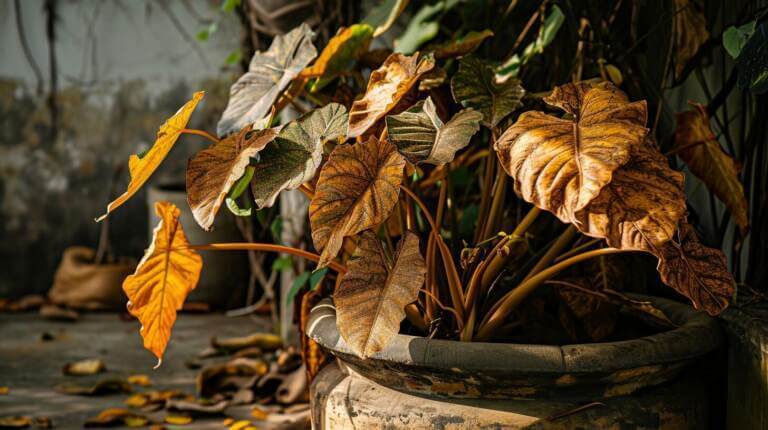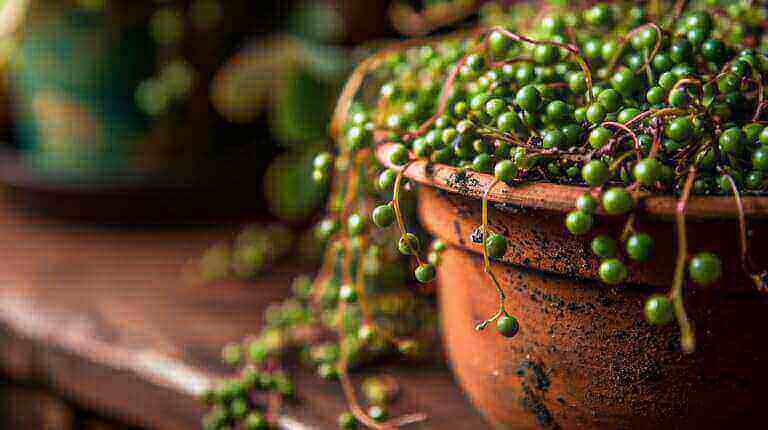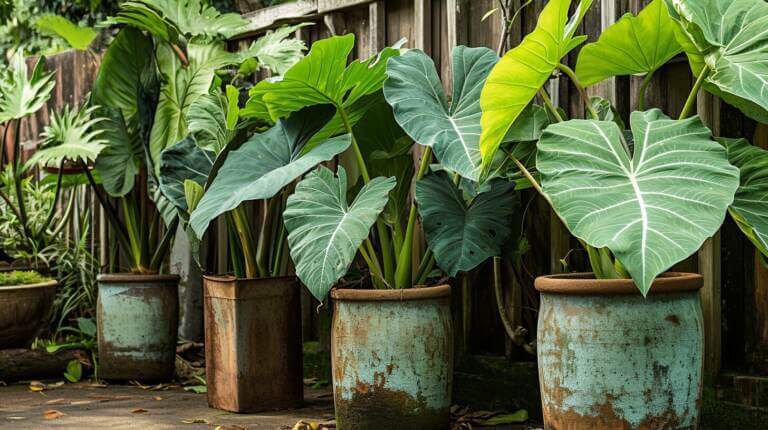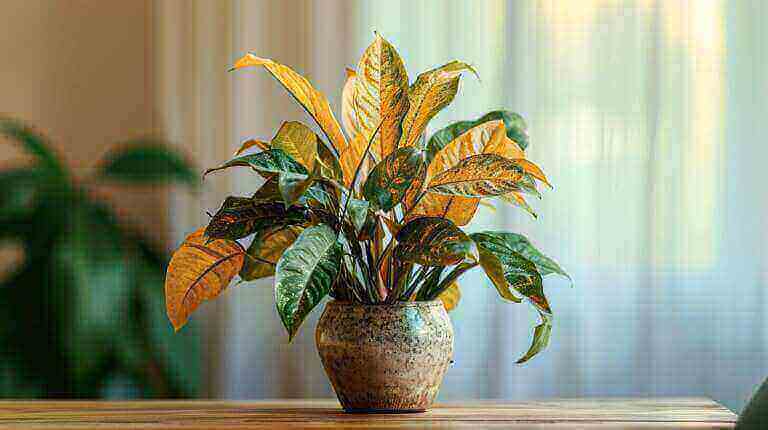Indoor plants, such as inch plants, require specific environmental conditions to thrive and maintain their health. One crucial factor that often gets overlooked is humidity. When inch plants are brought into our dry home environments, their health can suffer due to low humidity levels. Ensuring optimal humidity levels is essential for the overall well-being of these tropical plants.
Low humidity can cause inch plant leaves to become dry and limp, hindering their ability to take up water and nutrients. To prevent this, it’s important to increase the humidity in the air around your inch plants to mimic their natural habitat. Fortunately, there are several ways to achieve this.
Key Takeaways:
- Maintaining ideal humidity levels is crucial for the health and growth of inch plants.
- Inch plants thrive in humidity levels between 77% and 88%, similar to their tropical origins.
- Low humidity can lead to dry, limp leaves and hinder the plant’s ability to absorb water and nutrients.
- Methods to increase humidity include using a humidifier, misting the plants, or placing them on a humidity tray.
- By maintaining optimal humidity levels, you can ensure healthy inch plant growth and overall plant health.
Importance of Humidity for Plant Growth
Humidity plays a vital role in the growth and overall health of indoor plants. The level of humidity in the air directly affects the rate of transpiration, which is the process by which plants lose water through their leaves. When the humidity levels are low, plants tend to lose water more quickly than they can absorb it from the soil. This can result in dehydration and hinder their ability to carry out essential functions such as photosynthesis.
Optimal humidity levels help plants maintain a healthy moisture balance. When the humidity in the air is at an appropriate level, the plants can transpire water at a rate that allows them to take up enough water and nutrients from the soil. This ensures that they have a steady supply of the essential elements needed for growth. In addition to ensuring proper hydration, humidity also affects the vapor pressure deficit, which is the difference between the amount of moisture in the air and the amount of moisture that the air can hold at a given temperature.
When the humidity is too low, the vapor pressure deficit increases, and plants experience a higher rate of water loss. This can lead to wilting, stunted growth, and overall poor plant health. On the other hand, excessively high humidity can create an environment that promotes the growth of fungal diseases and can lead to root rot and other issues. Finding the right balance of humidity is essential to create an optimal environment for indoor plants to thrive.
Providing the appropriate humidity levels for indoor plants can be achieved through various methods. These include using a humidifier to increase the moisture in the air, misting the plants with water to create a localized increase in humidity, or placing the plants on a tray filled with water and pebbles. By implementing these techniques, you can help ensure that your plants receive the necessary humidity for healthy growth and development.
How to Increase Humidity for Inch Plants
Increasing humidity levels is crucial for the health and growth of your indoor inch plants. Low humidity can lead to dry, limp leaves and hinder the plant’s ability to absorb water and nutrients. Fortunately, there are several effective methods you can use to increase humidity and create a favorable environment for your inch plants.
Misting
Misting is a simple and effective way to increase humidity around your inch plants. Fill a spray bottle with water and mist the leaves and surrounding air. The fine droplets will evaporate, increasing the moisture in the surrounding environment. Aim to mist your inch plants regularly, especially during dry periods or when the indoor air is particularly dry.
Humidifier
Using a humidifier is another great option for increasing humidity levels. A humidifier releases water vapor into the air, creating a more humid environment. Place the humidifier near your inch plants or in the same room to ensure the moisture reaches the plants. Adjust the settings on the humidifier to achieve the optimal humidity level for your inch plants.
Humidity Tray
Placing your inch plants on a humidity tray is another effective method to increase humidity. Fill a tray with water and place pebbles or stones in the water. Then, place your inch plants on top of the pebbles. As the water evaporates, it will humidify the air around the plants. Make sure the water level in the tray is below the top of the pebbles to avoid waterlogging the plants’ roots.
By implementing these methods to increase humidity, you can create optimal conditions for your inch plants to thrive. Regular misting, using a humidifier, or utilizing a humidity tray will help maintain the ideal moisture levels required for healthy growth. Remember to monitor the humidity levels regularly and adjust your methods as needed to ensure your inch plants receive the right amount of moisture.
Other Tips for Inch Plant Care
When it comes to caring for your inch plants, there are a few additional tips that can help ensure their health and vitality. One key aspect is watering. Inch plants thrive when their soil is consistently moist, but be careful not to overwater, as this can lead to root rot. It’s best to water the plant when the top inch of soil feels dry to the touch.
Fertilizing is another important aspect of inch plant care. Using a balanced, water-soluble fertilizer can provide the necessary nutrients for optimal growth. Be sure to follow the instructions on the fertilizer packaging to avoid over-fertilizing, as this can damage the plant.
Regular pruning is beneficial for inch plants, as it helps maintain their shape and encourages new growth. Remove any dead or yellowing leaves, and trim back leggy stems to promote a bushier appearance. Additionally, propagating inch plants can be an exciting way to expand your collection. Simply take stem cuttings and root them in water or a well-draining potting mix.
Keep an eye out for pests that can damage your inch plants. Common pests such as spider mites and mealybugs can infest these plants. If you notice any signs of pests, isolate the affected plant and treat it with an appropriate insecticide or use natural pest control methods.
Lastly, repotting your inch plants may be necessary as they outgrow their current containers. Look for signs such as roots growing out of the drainage holes or the plant becoming top-heavy. When repotting, choose a pot with good drainage and use a well-draining potting mix.
By following these care tips and providing seasonal care based on temperature and light changes, you can create an ideal environment for your inch plants and enjoy a thriving indoor garden.
FAQ
Why is humidity important for inch plant growth?
Humidity is important for inch plant growth because most houseplants, including inch plants, come from tropical regions where they are accustomed to humidity levels between 77% and 88%. Low humidity can cause dry, limp leaves and hinder the plant’s ability to take up water and nutrients.
What are the ideal humidity levels for inch plants?
Inch plants thrive in humidity levels between 77% and 88%. Maintaining these optimal humidity levels is important for the overall health and well-being of the plants.
How can I increase the humidity for my inch plants?
There are various ways to increase humidity for inch plants. You can mist the plants using a spray bottle filled with water to create a fine mist that adds moisture to the air. Another option is to use a humidifier, which releases water vapor into the environment. You can also place the plants on a humidity tray filled with water and pebbles to increase the moisture in the air around them.
What are other essential aspects of inch plant care?
In addition to maintaining proper humidity levels, other essential aspects of inch plant care include proper watering, fertilizing regularly with a balanced, water-soluble fertilizer, pruning and propagating to maintain plant shape and promote new growth, monitoring for pests and addressing infestations promptly, repotting as the plant grows, and providing seasonal care based on temperature and light changes.







